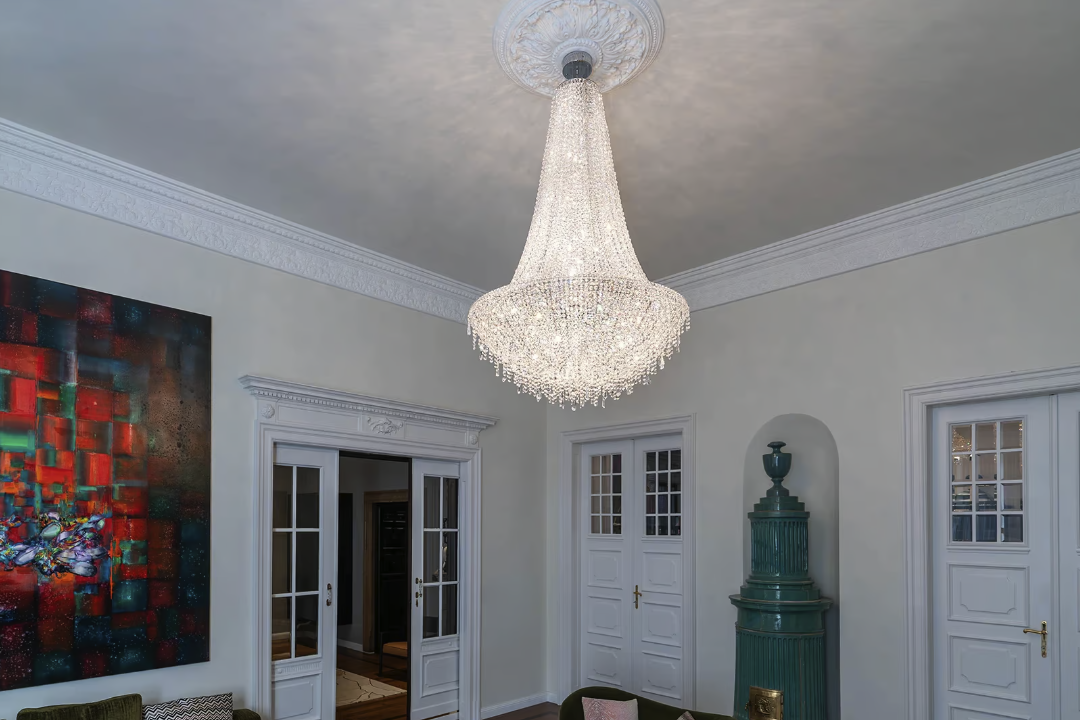The history of crystal chandeliers is a fascinating journey that reflects the evolution of design, craftsmanship, and societal values. Originating in the medieval period, chandeliers were initially simple wooden frames adorned with candles. These early lighting fixtures were primarily functional, serving to illuminate grand halls and churches.
However, as the Renaissance unfolded in the 15th century, the chandelier began to transform into a symbol of wealth and sophistication. The introduction of glass-making techniques in Venice led to the creation of exquisite glass chandeliers that dazzled the elite. The Murano glassmakers became renowned for their intricate designs, which often featured elaborate motifs and vibrant colors.
By the 18th century, crystal chandeliers had firmly established themselves in royal palaces and aristocratic homes across Europe. The use of lead crystal, which refracts light beautifully, became a hallmark of luxury. Notable examples include the grand chandeliers found in the Palace of Versailles, where they were used to enhance the opulence of the court.
These magnificent fixtures were often adorned with prisms that caught and scattered light, creating a mesmerizing effect. As the Industrial Revolution progressed in the 19th century, advancements in glass production made crystal chandeliers more accessible to the burgeoning middle class. This democratization of luxury allowed for a wider variety of designs and styles, paving the way for their presence in modern homes.
The Art of Craftsmanship: How Crystal Chandeliers are Made
The Selection of High-Quality Materials
The journey begins with the selection of premium materials, primarily lead crystal, renowned for its exceptional brilliance and clarity.
The glass is melted at high temperatures and then shaped into various components, such as arms, bowls, and pendants. Skilled artisans employ techniques like blowing, molding, and cutting to achieve the desired forms. Each piece is meticulously crafted to ensure it meets the exacting standards of quality that define a true crystal chandelier.
The Art of Faceting
Once the individual components are created, they undergo a process known as faceting. This involves cutting the surface of the crystal to create multiple angles that enhance its ability to refract light. The more facets a piece has, the more it sparkles when illuminated. After faceting, each crystal is polished to perfection, ensuring that any imperfections are removed and that the surface gleams.
The Final Assembly
The final assembly involves carefully connecting all the components using metal frames, often made from brass or other durable materials. This stage requires precision and expertise, as each piece must be securely attached to create a balanced and harmonious design.
Choosing the Perfect Crystal Chandelier for Your Space: Size, Style, and Placement
Selecting the ideal crystal chandelier for a space involves careful consideration of several factors, including size, style, and placement. The size of the chandelier should be proportionate to the room it will inhabit. A common guideline is to add the dimensions of the room (in feet) together and convert that sum into inches to determine an appropriate diameter for the chandelier.
For instance, a room measuring 12 feet by 15 feet would suggest a chandelier with a diameter of approximately 27 inches. However, this is merely a starting point; personal taste and the specific layout of furniture can also influence size choices. Style is another critical aspect when choosing a chandelier.
Crystal chandeliers come in various designs ranging from traditional to contemporary. A classic design may feature ornate details and intricate patterns, while modern interpretations might embrace minimalist aesthetics with clean lines and geometric shapes. It’s essential to consider the existing decor of the room; a lavishly decorated space may benefit from an equally opulent chandelier, whereas a more understated environment might call for a simpler design that complements rather than overwhelms.
Additionally, placement plays a vital role in maximizing the chandelier’s impact. Hanging it at an appropriate height—typically around 30 inches above a dining table or 7 feet above a floor in living areas—ensures it becomes a focal point without obstructing views or movement.
The Impact of Crystal Chandeliers on Interior Design: Creating Elegance and Glamour
Crystal chandeliers have long been associated with elegance and glamour in interior design. Their ability to reflect light creates an ambiance that can transform any space into a luxurious haven. When strategically placed in entryways or dining rooms, these fixtures not only illuminate but also serve as statement pieces that draw attention and admiration.
The interplay of light and crystal creates a dynamic visual experience; as natural light changes throughout the day or as artificial lighting shifts in intensity, the chandelier’s appearance evolves, adding depth and interest to the room. Moreover, crystal chandeliers can enhance various design styles beyond traditional opulence. In contemporary settings, they can be juxtaposed with modern furnishings to create an intriguing contrast that elevates the overall aesthetic.
For example, a sleek, minimalist dining table paired with an elaborate crystal chandelier can create a striking visual tension that speaks to both luxury and modernity. Additionally, in spaces designed with eclectic or bohemian influences, a vintage or uniquely shaped chandelier can serve as an unexpected focal point that ties together diverse elements within the room.
Maintaining the Beauty of Your Crystal Chandelier: Cleaning and Care Tips
To preserve the beauty and brilliance of a crystal chandelier, regular maintenance is essential. Dust accumulation can dull its sparkle over time; therefore, routine cleaning should be part of any homeowner’s care regimen. A soft feather duster or microfiber cloth can be used to gently remove dust from the surface of the crystals and metal components.
For deeper cleaning, it’s advisable to turn off power to the fixture and carefully remove individual crystals if possible. Soaking them in warm water mixed with mild dish soap can help eliminate grime without damaging the finish. When reassembling after cleaning, it’s crucial to ensure that all components are securely fastened to prevent any accidents or damage.
Additionally, checking for loose wiring or connections during maintenance can help avoid electrical issues down the line. For those who may feel uncomfortable performing maintenance themselves, hiring a professional cleaning service experienced in chandelier care can be a worthwhile investment. This not only ensures thorough cleaning but also provides peace of mind regarding safety and preservation.
The Future of Crystal Chandeliers: Innovative Designs and Technology Integration
As we move further into the 21st century, crystal chandeliers are evolving alongside advancements in design and technology. Contemporary designers are experimenting with innovative materials and forms that challenge traditional notions of what a chandelier Lumesdesign can be. For instance, some modern chandeliers incorporate LED lighting technology that not only enhances energy efficiency but also allows for customizable lighting effects.
This integration enables homeowners to adjust brightness levels or even change colors according to mood or occasion. Moreover, there is a growing trend towards sustainable design practices within the lighting industry. Manufacturers are increasingly sourcing eco-friendly materials and employing sustainable production methods in their chandelier designs.
This shift not only appeals to environmentally conscious consumers but also reflects a broader movement towards responsible consumption in home decor. As technology continues to advance, we can expect even more exciting developments in crystal chandelier design—blending timeless elegance with modern innovation to create stunning pieces that resonate with contemporary lifestyles while honoring their rich historical legacy.

